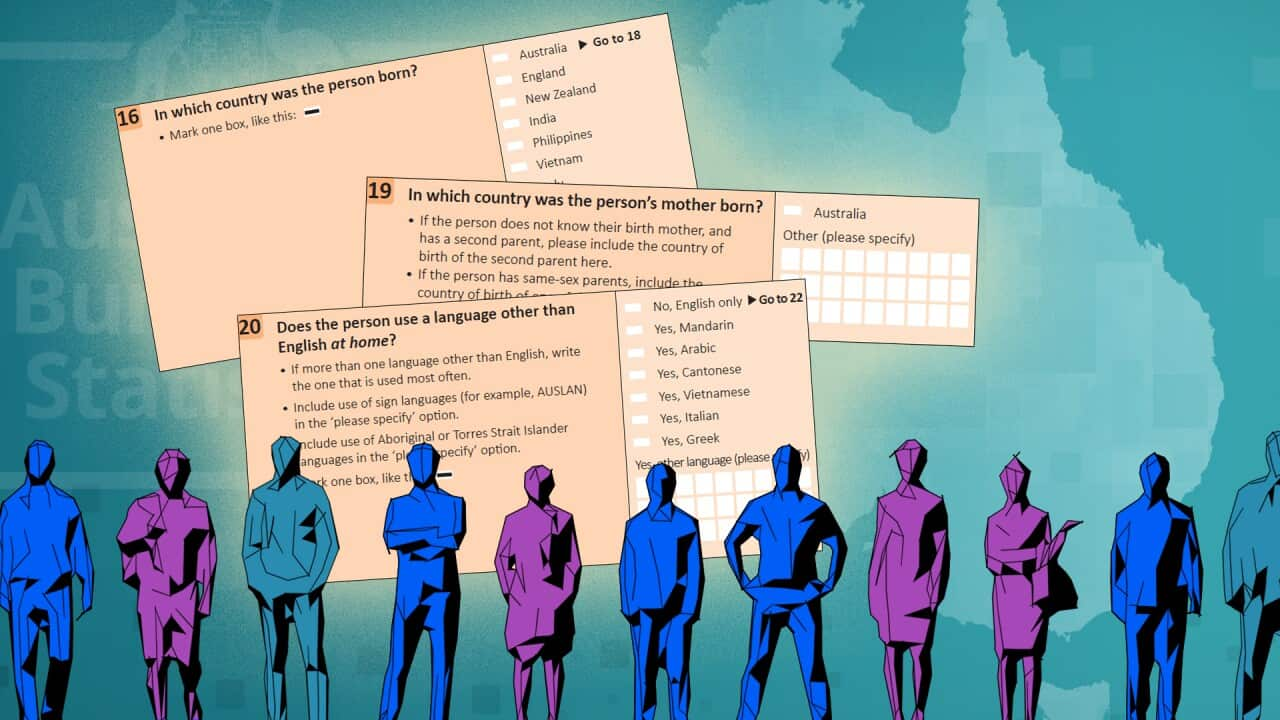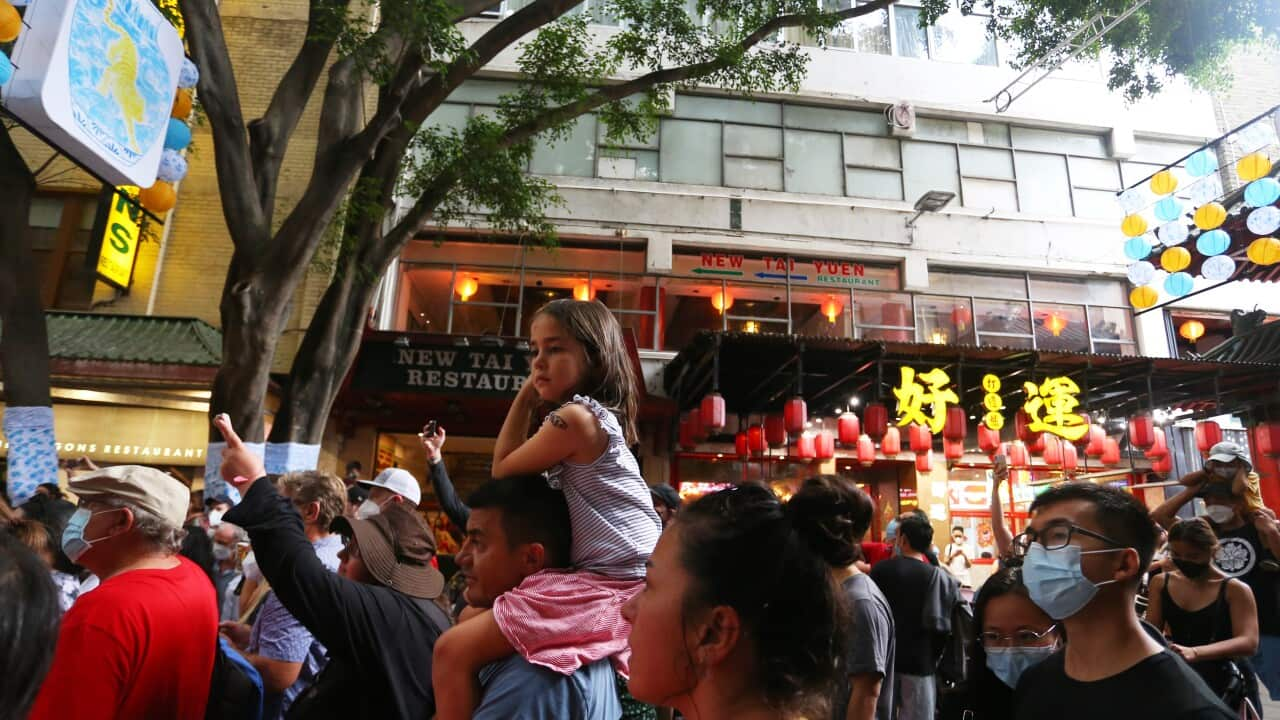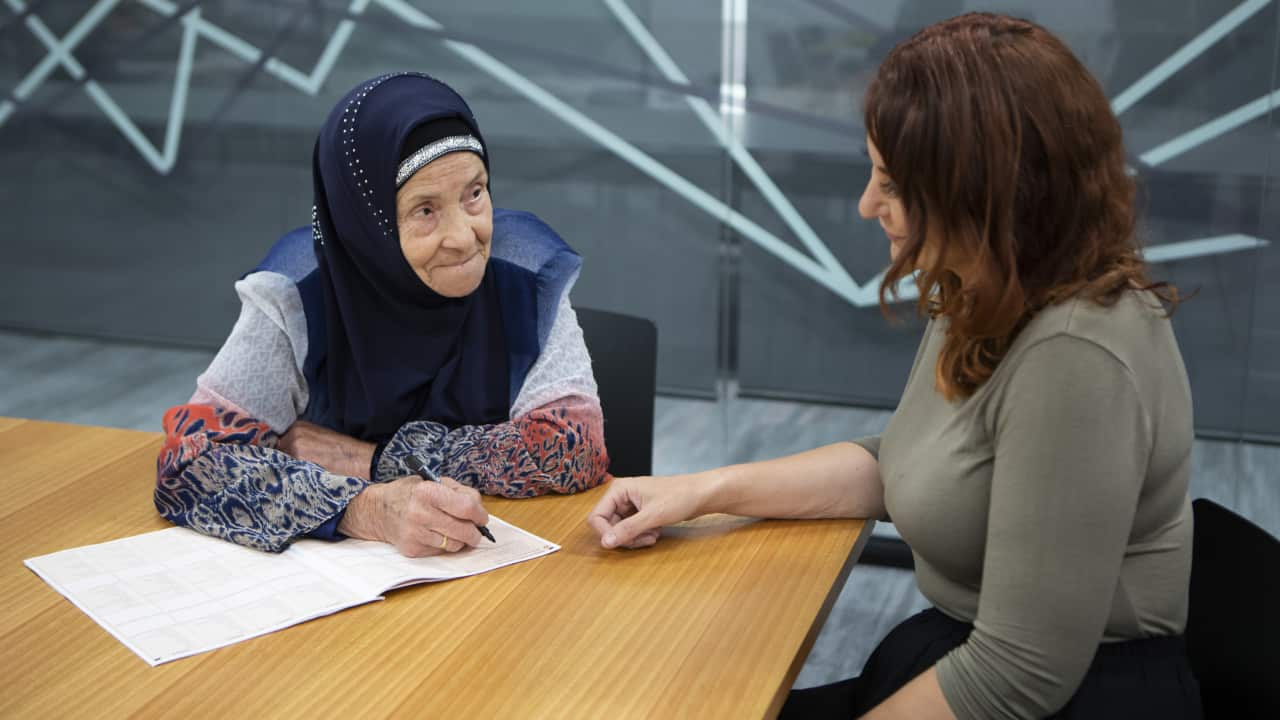Key Points
- More than half of all Australians are first or second-generation migrants, figures from the census have shown.
- The number of people who used a language other than English at home has increased by nearly 800,000
More than half of all Australians are first or second-generation migrants, figures from the census have shown.
The results of the 2021 Census, released on Tuesday by the Australian Bureau of Statistics (ABS), showed 48.2 per cent of Australians have a parent born overseas, and 27.6 per cent were born outside Australia.
Meanwhile, the number of people who used a language other than English at home has increased by nearly 800,000, rising to over 5.5 million people.
The ABS said the data showed Australia is a "fast-changing, growing and culturally diverse nation".

Source: SBS News
The 2021 Census counted 25,422,788 people in Australia, excluding overseas visitors, and provides insight on areas including cultural diversity, families and homes, and how the country changed during the pandemic.
This is more than double the number counted 50 years ago, with the 1971 Census covering 12,493,001 people.
Rising number of residents born overseas
The Census aims to provide a snapshot of the cultures and languages that make up Australia by providing data on cultural diversity, country of birth, ancestry, and languages used at home.
From 2017 to 2021, over one million people (1,020,007) arrived in Australia, contributing to the proportion of residents who are either first or second-generation increasing to 51.5 per cent.
India becomes third-largest country of birth
The largest increase in country of birth for people born outside Australia was India, which has moved past China and New Zealand to become the third-largest country of birth behind Australia and England.
An additional 217,963 people born in India were counted in the 2021 Census.

India has moved past China and New Zealand to become the third-largest country of birth behind Australia and England. Source: SBS News
When it comes to ancestries, the top five reported followed previous trends with English, Australian, Irish, Scottish and Chinese being the top five most-reported.
Long-term health conditions included for first time
The Census also collected information on long-term health, finding over eight million Australians had been diagnosed as having a chronic condition.
Of the most-reported conditions, 2,231,543 people reported having mental health conditions, 2,150,396 said they had arthritis and 2,068,020 reported having asthma.
Females were more likely to report a long-term health condition than males.

For the first time, the 2021 Census has included information on the number of people who have long-term health conditions. Source: SBS News
"For the first time, we have data on long-term health conditions across the whole population," he said.
"This is critical data to inform planning and service delivery decisions about how treatment and care is provided for all Australians."
Aboriginal and Torres Strait Islander populations increasing
The numbers of Aboriginal and Torres Strait Islander people is growing, with an increase of 25 per cent since 2016.
The Census found 812,728 people (3.2 per cent of the population) identified as Aboriginal and/or Torres Strait Islander.
That's up from 649,200 (2.8 per cent of the population) in 2016.
The number of Aboriginal and Torres Strait Islander people aged 65 years and over increased to over 47,677 in 2021, up from 31,000 in 2016 and 21,000 in 2011.
Traditional languages also continue to be an important part of Aboriginal and Torres Strait Islander households, with 167 Aboriginal and Torres Strait Islander languages spoken at home in 2021 among 78,656 people.
The most widely reported language groups spoken were Arnhem Land and Daly River Region Languages, Torres Strait Island Languages, Western Desert Languages, Yolngu Matha and Arandic.
Christianity remains most popular religion despite eight per cent drop
Christianity remains the most common religion in Australia, with 43.9 per cent of people identifying as Christian.
This has reduced from 52.1 per cent in 2016 and from 61.1 per cent in 2011.
While fewer people are reporting their religion as Christian, more are reporting ‘no religion’, with 38.9 per cent of Australia’s population reported having no religion in the 2021 Census, an increase from 30.1 per cent in 2016 and 22.3 per cent in 2011.
Hinduism has grown to 2.7 per cent of the population, and Islam has grown to 3.2 per cent of the Australian population.
"The religion question holds a special place in the Census – it is one of the few topics that has been in every one of Australia’s 18 Censuses and is the only question that is voluntary," Dr Gruen said.
"Census religion data shows a characteristic of Australia that has changed significantly over the past two decades."

While Christianity remains the most common religion in Australia, the 2021 Census found numbers had dropped, while the number of people who recorded 'no religion' increased. Source: SBS News
Linguistic diversity continues to grow among Australia's households
The number of people who used a language other than English at home has increased by nearly 800,000 from 2016 to over 5.5 million people (5,663,709).
Some 850,000 of this group reported that they do not speak English well or at all.
Mandarin continues to be the most common language other than English used at home, followed by Arabic.
Punjabi had the largest increase, with over 239,000 people using Punjabi at home, an increase of over 80 per cent from 2016.
Census data collected information on over 250 ancestries and 350 languages, Dr Gruen said.
Decrease in new migrants during COVID-19 pandemic
While Australia welcomed over one million new migrants (1,020,007) since 2017, most of these arrived before the COVID-19 pandemic.
Census data on the year of arrival in Australia shows that more than 850,000 people arrived over the three-year period between 2017 and 2019.
By contrast, during the 2020 and 2021 pandemic years, the arrival numbers declined to 165,000 people.
The changing face of Australia's families
For the first time, the Census recorded more than a million one-parent families (1,068,268), of which four out of every five of those parents were female.
The 2021 Census counted more than 5.5 million couple families, of which 53 per cent have children living with them and 47 per cent do not.
In 2016, the Census saw an increase of nearly 140,000 people over 55 who look after other people’s children to more than 825,000. However, in 2021, that figure dropped by 50,000 to under 775,000.
Millennials overtaking Boomers as largest generational group
Within a very small margin, numbers of Millennials (25-39 years old) have caught up to Baby Boomers (55-74 years old) as the largest generational group in Australia.
Baby Boomers and Millennials each have over 5.4 million people, with only 5,662 more Baby Boomers than Millennials counted on 10 August 2021, the Census night.
Over the last ten years, Millennials have increased from 20.4 per cent of the population in 2011 to 21.5 per cent in 2021. In the same time, Baby Boomers have decreased from 25.4 per cent in 2011 to 21.5 per cent in 2021.
In the 1966 Census, nearly two in every five people (38.5 per cent) were Baby Boomers.
More people at home on Census night
The 2021 Census counted two million more people (2,178,094) at home on Census night than in 2016.
With COVID-19 restrictions in place across the nation on Census night, 96 per cent of people counted were at home rather than travelling.
This means more families and households were together in the data collected, which presents a unique picture of Australian homes and families.
The impact of COVID-19 restrictions and limits on overseas travel can also be seen, with a decrease of more than 80 per cent in the number of overseas visitors counted in the Census, from 315,531 in 2016 to 61,860 in 2021.
Response rate and fines
The 2021 Census included data from 10,852,208 dwellings during the height of the global COVID-19 pandemic.
The dwelling response rate was 96.1 per cent, up from 95.1 per cent in 2016.

The 2021 Census included data from 10,852,208 dwellings and 16 matters were referred to the CDPP. Source: SBS News
If someone continues to refuse after being directed by the Australian Statistician, they can be prosecuted and fined up to $222 a day and receive a criminal conviction.
From the 2021 Census, 16 matters have been referred to the Commonwealth Director of Public Prosecutions for consideration due to people failing to comply with a Notice of Direction.













